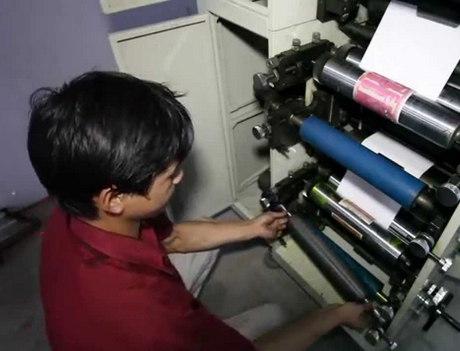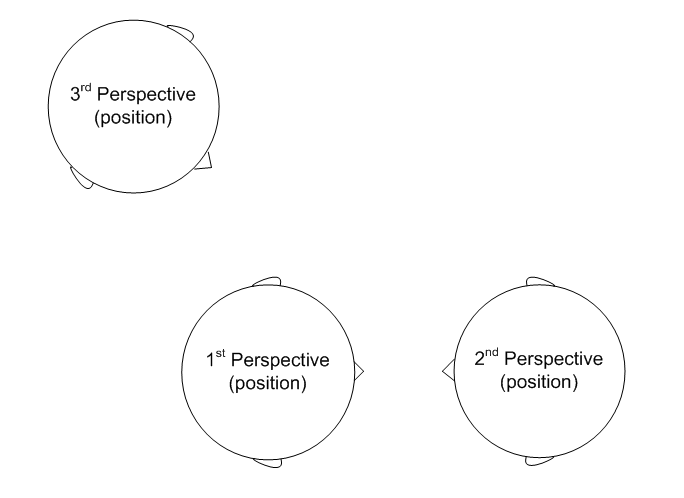When Jiménez hired Stephen and his two friends to work in his new printshop, he was excited to get an experienced printer who already knew both how to run the offset press and who was also really good at helping customers discover what their print-runs needed to look professional. The other guys, while less experienced, could learn a lot from Stephen. Everything seemed great for the first few months and the founders were glad they hired well. But after Stephen started taking on ordering responsibilities things seemed to change.

First he purchased so many boxes that they had to store a year’s supply which they didn’t really have space for. Annoyed by this mistake Jiménez spoke with Stephen and asked him to be more careful about making inventory decisions. They were already stretching the budget too far considering that business was not growing as fast as they had hoped with that corporate franchise shop that had moved in just 2 blocks from their location. So Jiménez explained to Stephen that he needed to pay more attention to the bottom line and take responsibility for profits not just ordering. Jiménez told Stephen, “You can talk to me any time if you are unsure. Call me.”
Then a couple of weeks later Stephen got an offer to pick up some boxes of special weight paper at a discount and ordered those without asking. Now this really irked Jiménez. Hadn’t he told him to check in on the big decisions? This time he let Stephen have it. There would be no third chance. After all Jiménez had his money on the line for this business. He was the boss. Stephen needed to get on board or head on down the road if he didn’t like it.
Another Perspective On the Story
When Stephen went to work for the small print shop they had just opened and the owner asked him if he knew any friends who might also join the team. Stephen was proud to invite his buds to join the team because he felt like they were going to help build a great business. All went well for the first few months. But then Jiménez, Stephen’s boss, seemed to change, became a jerk. Was it stress? Or was Jiménez just an inexperienced boss?
Jiménez had asked him to take more responsibility and so Stephen did and he managed to get a decent discount on supplies by making a bulk purchase on paper that they were going to use for sure. But Jiménez was such a control freak that he got angry that Stephen had made a decision without his approval. And after having asked him to be more of a manager over the other guys.
Which Perspective is the True One?
Does this scenario sound familiar? I’ve seen similar situations hundreds of times. When I got asked to consult with this small business the two men were each sure that the other was the jerk. Communication was strained and both were having thoughts that the other was wrong, maybe stupid, and certainly unwilling to listen to common sense.
We don’t know what we don’t know. We don’t know what the other person knows. We think we do because we assume that they know what we know. So often we assume that they are seeing things the same way we are. That they have the same goals, the same expectations, the same reactions and judgements that we have. But they don’t.
Each of us perceive the world through the filters of our individual personal experience, aims, personal values, and habits of thinking. No two people live in exactly the same world. That is what makes coordination of effort so difficult. This is the number one task of every manager and every member of every team effort, whether they are the “official” leader or not.
You can learn to see the world better through the eyes of those around you.
This skill is a learnable. Rather than imagining that you understand another person’s way of thinking you can learn how to recognize when you are using imagination to fill in what you can’t be sure of, then ask appropriate questions or at least calculate the risk of moving forward without knowing whether you have shared agreement or not.
There are exercises you can learn to do where you step into the shoes of another person and discover what you do and do not know for sure. You can step out of your own way of thinking and take on another person’s model of the world. Then you can use what you learn by stepping into their perspective to communicate about the differences you discover so that you can clarify and set shared expectations and goals.
This is like sports team members who practice together so that they can run plays so efficiently that they work as a team rather than a collection of individual members thrown onto a field together. When you understand the thought patterns, emotional reactions, values, habits, and goals of the other members of your team you develop what they psychologists call “theory of mind.”
We have all seen loving couples who have long been together get to the point where they can finish one another’s sentences. When a relationship works well they recognize not only their similarities but their differences and they learn to expect what the other person is most likely to do. But on a team you are working with people who are a usually very different than you. These differences can make the team stronger since division of labor is why we form teams in the first place. But our differences also challenge us to work together in predictable ways.
LEARNING EXERCISE
Start by learning how to describe your own patterns of thoughts and reactions. Then compare those to the people you work with and learn to predict the different strengths that other team members bring to the team. When things are not working you can do an exercise that will help you discover how their perspective differs from your own.
After observing your own thoughts, emotions, driving values, goals and expectations, then step out of those for a moment. Change locations in your actual physical space and leave all of those ways you are behind in the place where you were sitting or standing so that you can come back to them in a few moments.

Now move into another physical space that in your imagination represents the other person or persons you are struggling with. Step into or sit down into this new space as if you were sitting down into the other person with all of their roles, habits, tasks, values, goals, thought processes, emotions, ways of holding and using their body, and even whatever you know of their history. From this new perspective try to see the situation from their eyes and hear what sorts of things they may be saying in their own head. Note what feelings they are likely having. But hold all of this new information tentatively until you get a chance to communicate with them and ask questions to verify your theory of their mind.
Once you have experienced the situation from inside their moccasins, then step up out of them and move to a neutral place and make a note of all of the ways that they perceive things differently than you do in that first position. From this more objective perspective you can look back and forth between your original perspective and the perspective you imagine that the other person experiences.
Having made this comparison you can act like a movie director and imagine what information each of those two other perspectives needs in order to come to a shared set of expectations and a shared agreement or commitment. Having planned those it is time to get back together with the real person and check out your imagined theory of their mind and see how accurate your guesses were.
This mental exercise may sound like a lot or work at first, but it get easy once you’ve done it. Don’t just think about it. Try it for yourself now. Knowing about a mental skill is not good enough. You must practice it a few times so that it wires new neural pathways of possibility inside your brain. We already know too much stuff that we don’t bother to use. So try it now.
Now by asking questions and clarifying expectations you can work to achieve a shared set of expectations. This will make their actions less frustrating for you when you experience their differences. And it will help create a synergy that produces quality results. Your team will begin to play more like a team and that will make the workplace a more positive environment.
A Happier Ending
Once I taught this processes to Jiménez and Stephen they became intrigued by all the differences in how they were seeing each other’s perspective. They began regrowing their partnership based relationship and promised to help one another explore both of their perspectives each time they worked together.
Their shared vision for the company grew and they gave their local competition a run for the money because they begin to be know for being more efficient, making fewer mistakes, and delivering higher quality work than their competitors. Most importantly they found a way to come back to mutual respect for one another and that made their organization a much better place for people to work.

